September 19, 2017
We All Love the Beautiful Girls, by Joanne Proulx
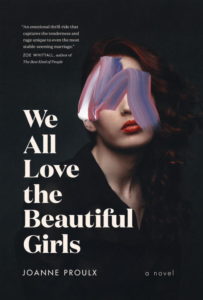 A thing I think is funny is a description in Joanne Proulx’s biography accompanying her recently released second novel, We All Love the Beautiful Girls. Among much acclaim for her previous novel is the detail that it won “Canada’s Sunburst Award for Fantastic Fiction,” which would be a cool award to be win, I imagine. To be officially fantastic. Although the tag for the Sunburst Award is “for excellence in the Canadian literature of the fantastic.” Which is to say genre, sci-fi and fantasy. Which is to say that Proulx, whose previous book was the YA title Anthem of a Reluctant Prophet, as an author requires tricks to be packaged, wrapped up tidily in a neat little box for her mainstream novel about the perils of modern family life.
A thing I think is funny is a description in Joanne Proulx’s biography accompanying her recently released second novel, We All Love the Beautiful Girls. Among much acclaim for her previous novel is the detail that it won “Canada’s Sunburst Award for Fantastic Fiction,” which would be a cool award to be win, I imagine. To be officially fantastic. Although the tag for the Sunburst Award is “for excellence in the Canadian literature of the fantastic.” Which is to say genre, sci-fi and fantasy. Which is to say that Proulx, whose previous book was the YA title Anthem of a Reluctant Prophet, as an author requires tricks to be packaged, wrapped up tidily in a neat little box for her mainstream novel about the perils of modern family life.
And this is makes We All Love the Beautiful Girls so interesting, I think. Fantastic, even, in the non-supernatural sense of the word. It makes the novel not wrapped up or tidy or boxy in the slightest, instead furious with momentum, bursting open, exploding at seams.
I read the second half of this novel in a few hours one Saturday night, because it was a story that just kept going and going. Although I wasn’t sure at the very beginning, when all the action gets out of the way in a chapter or two: Michael and Mia discover they’ve been bilked out of their life-savings by a business partner/friend, and then their son, Finn, passes out in the snow at a party, nearly dying, with injuries he’ll carry with him for the rest of his life. All of this within the first 50 pages of a book over 300 pages long—what else can happen? Oh, only everything, and it’s how Proulx frames this narrative that is so fascinating, not on the drama itself but on unintended consequences, the shocking, tragic and terrifying ways that one thing can lead to another.
This is a novel with sharp edges and tight corners, and it’s a novel not afraid to make its reader uncomfortable. Told from Michael and Mia’s points of view in third-person and Finn’s in first person, the narrative is fragmented, patchwork, and then all the pieces become drawn together in the most disturbing fashion. And then it dawns on the reader as it dawns on the characters, that all these things are connected—objectification of and/or violence against women in particular, and how each and every character is implicated, and we see that that two characters peripheral to the story—Jess, a former babysitter now college student who sneaks in Finn’s window to sleep with him; Frankie, Finn’s contemporary whose feelings for him aren’t returned—and Mia herself are not so far apart after all in their experiences of womanhood and what is required for survival.
Some of the very worst things are what turn out to be universal.
September 18, 2017
Finally!
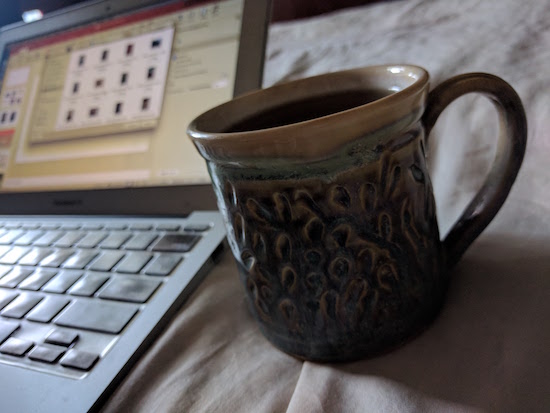
My children started school two weeks ago, but they didn’t really, because Iris’s first day wasn’t until Thursday, and I still had two articles due that week, plus two presentations to prepare for in the week following. So back-to-school as not a breath of fresh air and return to routines, because instead it was a scramble, but I did it. Articles finished, presentations presented, and here I am finally with five full workdays before me with only my usual deadlines, and time for creative work. I am going to revise a short story and write a new one that has been brewing for awhile, and then a new draft of my novel begins and there’s going to be lots of digging. So much work ahead, but I am looking forward to it—discovery is the greatest thing about writing anything. Plus, I have a million books to write about (far too few disappointing reads lately means I’ve overwhelmed with things to tell you about) and I want to write about my trip to Edmonton, so let this post serve as official confirmation: this blog is back in business. And if you’ve sent me an email lately, I will probably reply to it soon.
September 12, 2017
What is Going to Happen Next, by Karen Hofmann
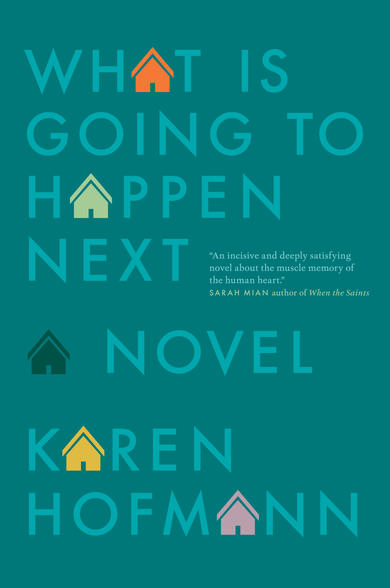 A group of siblings running wild in rural British Columbia, under the dubious care of their hippie dad while their mother has been hospitalized for psychiatric problems. We first glimpse them through the point-of-view of twelve-year-old Cleo who sees herself as the family lynchpin, caring for her younger brothers along with her older sister, Mandalay. Just barely holding it together, and then their father dies. The police are at the door. Cleo is trying to pass herself off a a responsible agent, so earnestly that the reader can almost forget that she is only a child. But she is indeed only a child, and her baby brother will be adopted, Cleo and her brothers placed in foster care, Mandalay in a group home. Each of the siblings set in very different orbits…and the novel actually begins twenty years on from all that.
A group of siblings running wild in rural British Columbia, under the dubious care of their hippie dad while their mother has been hospitalized for psychiatric problems. We first glimpse them through the point-of-view of twelve-year-old Cleo who sees herself as the family lynchpin, caring for her younger brothers along with her older sister, Mandalay. Just barely holding it together, and then their father dies. The police are at the door. Cleo is trying to pass herself off a a responsible agent, so earnestly that the reader can almost forget that she is only a child. But she is indeed only a child, and her baby brother will be adopted, Cleo and her brothers placed in foster care, Mandalay in a group home. Each of the siblings set in very different orbits…and the novel actually begins twenty years on from all that.
Cleo is a middle-class mother of two small children, overwhelmed by the excruciating demands of early motherhood and hungry for intellectual stimulation. Hofmann so exactly captures the claustrophobic impossibility of life with small children, and all the details that can trip one up—navigating strollers through rough terrain, the preparation and work required for a trip on the bus. The loneliness too, and this is only added to as the unnavigability of the world with small children keeps Cleo close to home. That she has no example in her own past of functional family life leaves Cleo even more stranded than the average mother of young children. Her husband is not without sympathy, but he’s frustrated, and not receptive to what his wife is going through.
Meanwhile, Cleo’s sister Mandalay is living a different kind of life in the downtown core of Vancouver, far away from the suburbs. We find her at at a particularly high point—the cafe she has been co-managing has just found acclaim by being written up in a magazine. Mandalay loves her job, her co-worker, that she is responsible for arranging art in the place and becoming known for her skills in curation. Sure, her apartment is tiny and expensive, and her work means she is busy all the time, but Mandalay finds herself fulfilled for the first time in her life, after years spent hitching onto the rides of the men she’s been in relationships with. Which, inconveniently, is the moment that Duane turns up, a man who suits her in so many ways but is unwilling to provide proper emotional ties. But does she want these? Does she need these? What kind of relationship does Mandalay think she deserves?
And then finally, there is their younger brother Cliff, hapless, utterly lacking guile. He’s not stupid though, Cliff, and he knows the problem is mainly other people. So he knows, for instance, not to let people know about his new TV, when he finally saves up from his landscaping job for the one he’s been looking for. He knows that when other people find out he’s got something, they’re only ever going to want to take it, so he keeps to himself. He works hard and has made a comfortable life for himself, and all he wants is to stay out of trouble…but trouble seems to find him. And Hofmann’s depiction of Cliff is one of the most wonderful parts of this book, how fully realized he is, without the cliches often fastened to literary characters lacking in IQ. How canny he actually has to be to get along in the world, and all the tricks and devices he’s figured out that nobody would ever give him credit for. He’s a terrific character.
The novel opens with the three siblings’ different narrative threads, each of which are far apart due to family history and how disparate their circumstances are in terms of life and also of postal codes. The three of them are in touch, but mainly see each other at holidays, can go weeks without a phone call. But when their long lost baby brother finally tracks them down, and then Cliff has an accident that requires him to recover in the relative quiet of Cleo’s suburban house, the siblings begin to come together again. And questions are raised not only about the practical matters of how characters who’ve come from different places can be a family, regardless of their mutual place of origin. But also about the role their past traumas play in the present day, and what those traumas are, exactly. It turns out the history each of them has taken for granted turns out to be more complicated than any of them have imagined. And what does that mean for the future?
I really liked Karen Hofmann’s first novel, After Alice, and was so pleased that What is Going to Happen Next lived up to my expectations—and then some. It’s a novel that’s as original as it is ambitious, and it works, resulting in an all-engrossing visceral reading experience, and I’m recommending it to everyone.
September 11, 2017
Happy Half-Birthday, Mitzi Bytes!
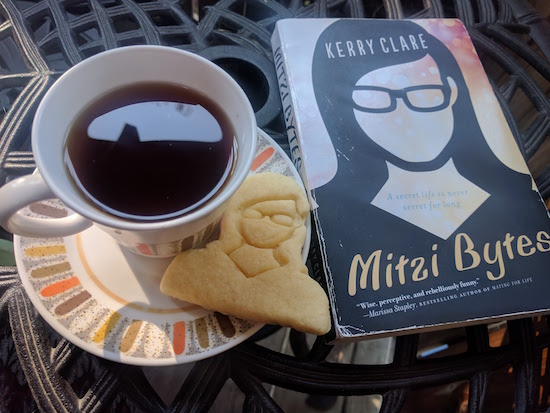
It’s Mitzi Bytes’ half-birthday! This week marks six months since Mitzi was launched and hit the Independent Bestseller list, reaching #2 for Trade Paperback Fiction and #6 Overall. It’s been an excellent run, and we’ve celebrated by finally making use of our custom cookie cutters from our friends at Jammy Dodger, The Bakery. I am grateful to everybody who has supported this book, booksellers, festivals, friends and readers. You’ve made this all such a pleasure.
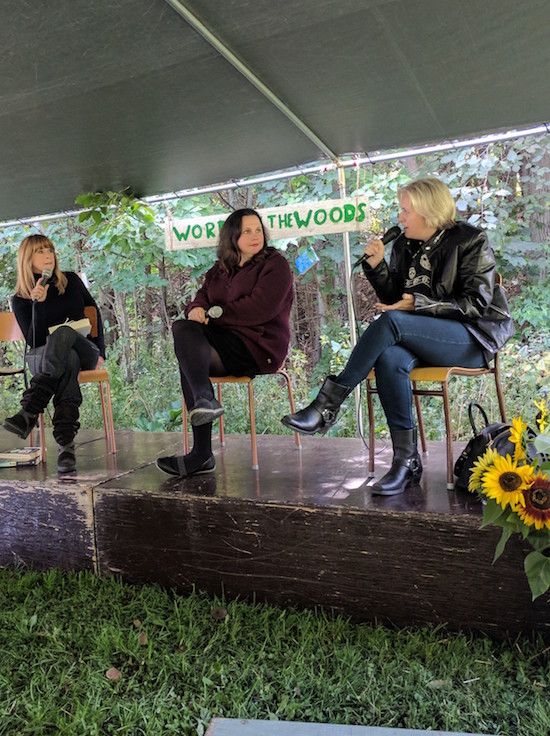
And speaking of pleasures, have never known one quite like the Dunedin Literary Festival. It was the most beautiful, fall colours just beginning to give us glimpses, and the sun was shining and the sky was blue. I appeared on a panel with my friend, Kate Hilton, moderated by Tish Cohen, whose Town House I read and loved ten years ago. We had such a good time, and afterwards I hung out with my husband and children and we soaked up all the goodness of a day out in nature—there were activities for kids, a playground and swing, delicious local fare for lunch (empanadas to die for), and I got to see the panel later that day with Alison Pick, Cecily Ross, and Claire Cameron. It was a wonderful day, and I’m really looking forward to returning in 2018.
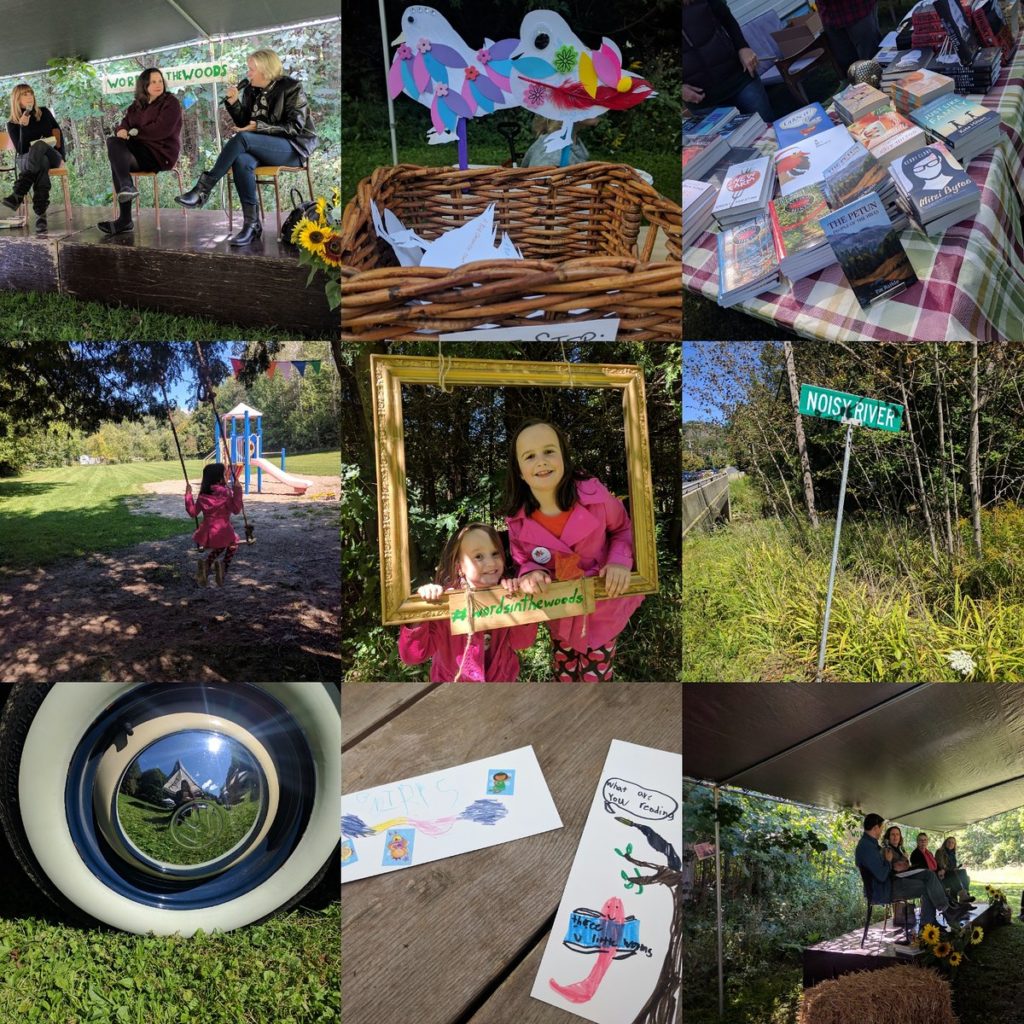
There are more good things coming up this week! I’m doing a talk on the (long and winding) road from blog to book at the Brockton Writers this Wednesday at the Glad Day Bookshop. And Word on the Street is next week, Sunday September 24. In conjunction with WOTS, I got to do a fun questionnaire with She Does the City answering questions about my writing life and readerly fixations. You can read it here.
September 8, 2017
Buddy and Earl Go to School, by Maureen Fergus and Carey Sookoocheff
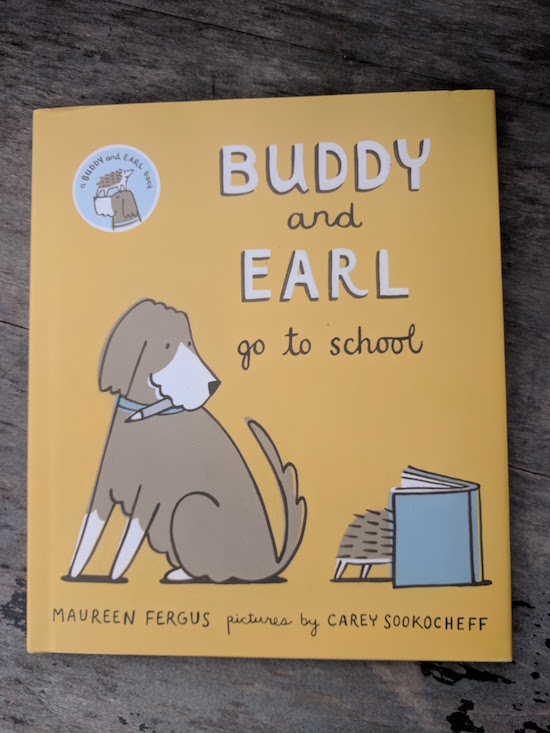
I love September—cardigans, golden light and sharpened pencils—but I also hate September. I always did. Because I hate change, although I’ve been trying hard not to let my children catch onto this. And while I loved the possibility of fresh starts, clean slates and pristine pencil cases, there was always an adjustment. New classes, new friends, old friends who had become new people, new teachers—I would find these things very difficult. I still do. My children seem to be doing perfectly fine, but I have had a difficult week adjusting to grade three and junior kindergarten—who would have thought it? All the tumult and violence going on in the world hasn’t helped the matter either.
And so I’ve sought solace in good things, sweet things and funny things. Buddy and Earl Go To School, by Maureen Fergus and Carey Sookoocheff is the fourth book in this series about a dog and a hedgehog and (although I think I’ve said this about previous titles, but still) it’s the best one yet! I can’t say what it is we like so much about these books at our house exactly, except that it involves the fact of a hedgehog, plus Buddy the dog’s deadpan address and aversion to contractions. It is understated, adorable comic genius.
In this story, Buddy and Earl are starting school. “‘Hurrah!’ cheered Earl. ‘Getting an education is the first step to achieving my dream of becoming a dentist.’ / ‘I do not think think hedgehogs can become dentists, Earl,’ said Buddy./ ‘With the right education, I can become anything,’ declared Earl. ‘And so can you, Buddy.”/ Buddy was very excited to hear this.”
When they turned up at school, the setting defied my expectations but was also so perfectly familiar. The school day proceeds in adorable funny fashion, and even when Earl was bored (“How long until gym? Is it almost snack time?”), we weren’t. And by the end of the book, I’m left with a bit more pep in my step. Every school day can be rich with surprises, and there is promise i September after all.
September 7, 2017
No one updates their blog enough
 No one updates their blog enough. But this is okay, because if my complaint was, “Everyone updates their blog too often,” it would tell you something about blogs and how much they matter to me—namely that they don’t. But they do, even though I have not had time to read blogs this summer. A statement that previously would have seemed ridiculous to me because one can always find some time. But this summer I spent less time than usual online, and I’m not sorry about this. But it’s wondrous to come to blogs, today while I eat my lunch, home alone, Iris’s first day of kindergarten. Feeling emotional, obviously, but blogs are such a solace, and I feel like my friends have all been here for me. And I want to share their posts with you.
No one updates their blog enough. But this is okay, because if my complaint was, “Everyone updates their blog too often,” it would tell you something about blogs and how much they matter to me—namely that they don’t. But they do, even though I have not had time to read blogs this summer. A statement that previously would have seemed ridiculous to me because one can always find some time. But this summer I spent less time than usual online, and I’m not sorry about this. But it’s wondrous to come to blogs, today while I eat my lunch, home alone, Iris’s first day of kindergarten. Feeling emotional, obviously, but blogs are such a solace, and I feel like my friends have all been here for me. And I want to share their posts with you.
- Sarah at Edge of Evening who is blogging from the beginning of August, and now I am waiting for her postcard from September, and to hear how her holiday to America was.
- A newer-to-me blog is Summer At Shores, by a woman I met at the Lakefield Literary Festival in July. I want to share her irises post, for obvious reasons, and because it’s wonderful.
- Pip Lincolne writes thoughtfully about a social media pile-on and women’s media at her blog, Meet Me At Mikes.
- I never tire of Julia Zarankin on the extraordinary ordinariness of birding at Birds and Words.
- I can’t wait to read Emily Wight’s new cookbook, Dutch Feast, which promises to make me fat, but in the meantime, there is a wonderful recipe for macaroni to tide me over.
- Rebecca Woolf on her daughter’s amazing, inspiring wildness.
- Alice Zorn on the amazing things that transpire when you publish a novel
- A new post at A Dainty Dish!! Ann Marie took my UofT blogging course a few years ago, and is one of the best people ever, and her new post is delightful and has pie.
- I promise you that Lindy Mechefske’s post is the most emotional, gorgeous recipe for making ricotta from expired milk that you’ve ever encountered in your life.
- Theresa Kishkan has a new book out, Euclid’s Orchard, and here’s a post about the difficult time in which it was created.
- Lindsay sums up a summer with swimming in her usual exuberant way.
- And Matilda Magtree DOES NOT REVIEW Dawn Dumont’s Glass Beads, which was a novel I loved entirely.
I don’t usually end my blog posts with questions, encouraging readers to engage in a more organic fashion, but I’m genuinely curious here, so I’m going to break my rule. What blogs have you been appreciating lately? Any posts you’ve written that you’re particularly proud of?
September 5, 2017
Guidebook to Relative Strangers, by Camille T. Dungy
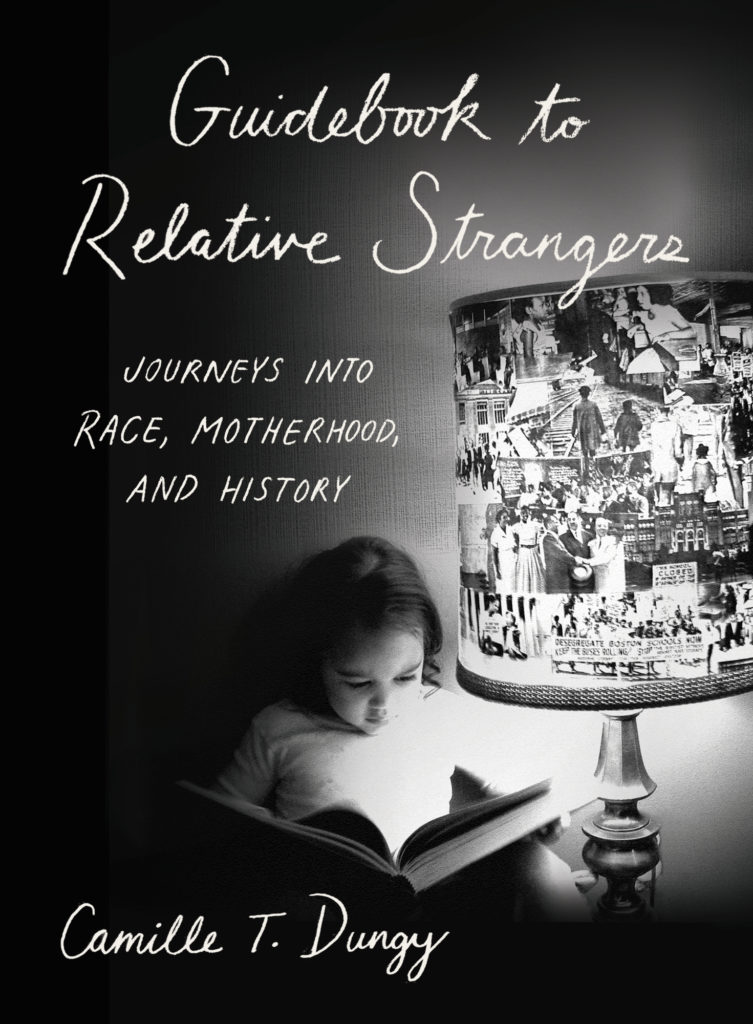
I can’t remember the last time a book had so strong a hold on me as Camille T. Dungy’s Guidebook to Relative Strangers: Journeys Into Race, Motherhood and History. A book whose force is evident from its opening page, a note of introduction. “When the nation that became the United States was beginning, women writers and black writers needed the endorsement of other people in order to prove their legitimacy,” Dungy writes in her very first sentence. Later in the paragraph: “The essays in the book you are reading are steeped in such history.” Dungy wants to resist this notion that she requires anyone but herself to demonstrate the merit of her work, and yet… She then she goes on to write five pages of the most beautifully written acknowledgements I’ve ever encountered in a book. A remarkable start, and an introduction indeed to Dungy’s expansiveness, generosity, thoughtfulness and ability to understand that two opposing ideas can be true at once.
Guidebook is a collection of essays, but like the best of such things is a journey itself, a whole worth more than its parts which fit so well that they don’t even seem like parts. It begins with an event from Dungy’s not so long-ago past, except that it was a thousand years ago because it was before she became a mother. She was at a writers’ retreat and trying not to become involved in a conversation about how she hadn’t seen the film, The Hours, because she didn’t care about The Hours. In this moment, as is often the case on this retreat, Dungy is the only black person at the table, and is therefore called upon to represent blackness and otherness to the white writers in her company. Which makes her tired—she’s just returned from time in Ghana and the essay contrasts these two experiences and she writes, “Perhaps it would be a more stable world if everyone could experience both the sensation of oneness and otherness a few times in life.” Back at the table, Dungy is assured that her companion doesn’t see her “as a black woman. You’re just who you are.” Which brings the author around to the powerful paragraph that led me to pick up this book in the first place, and certainly the paragraph delivers on everything this paragraph promises:
I am certainly who I am (an ornery individual at the moment) though I take umbrage at the idea of limiting my scope with a word like just when it is used to suggest that I am a simple person. If I may borrow a phrase from the great poet of our early democracy, “I am large, I contain multitudes.” Just in this context erases various complexities and dimensions of my being. There is a danger in refusing to, or tacitly agreeing not to, recognize my black womanness. Black womanness is part of what makes me the unique individual that I am. To claim you do not recognize that aspect of my personhood and insist, instead, that you see me as a “regular” person suggests that in order to see me as regular some parts of my identity must be nullified. Namely, the parts that aren’t like you.
Dungy is a professor, award-winning poet and editor, and devouring her non-fiction (I read this book in a day) put me in mind of Rebecca Solnit and Joan Didion (for style reasons and also San Francisco and California) and Anne Enright’s Making Babies with the perfect exuberance with which she writes about motherhood, and Leslie Jamison for the ways she writes about her body and her experiences with MS. Most of all, however, Dungy writes about language, which itself reveals so many secrets and much complexity. The essay “Bounds” is an incredible consideration of that words many meanings and what their connections tell us about human experience, about Dungy’s daughter’s language acquisition, about what divides us and what connects us, and how so often these two things are one and the same. I ordered this book not long after the terrifying events in Charlottesville, VA, in August, and it’s something to consider the images from the white supremacist rally against Dungy’s short essay about her time living in Virginia where her white friends delighted in bonfires, and she, because of the area’s legacy of racial violence, could only feel fear at the idea and reality of these kinds of events.
Dungy writes about her experiences travelling in America before her daughter turned two, when she was still nursing and could fly on her mother’s lap for free, and about the places they went and how Dungy would be both connected to and divided from the people she encountered, and how her daughter helped to mitigate the distance between Dungy and others. This is a book about the labours of motherhood and academia, and writing, and the ridiculous ways we negotiate these in the 21st century. It’s a book about cities and nature, and the words we use to describe these places, the names we call ourselves and others, and the places motherhood takes us where we never planned on going—I love a line in the essay “Inherent Risk, Or What I Know About Investment” that goes, “I passed the sign for the landmark every time I took the Fruitvale Avenue exist off I-580 on my way home, but I had no idea what it referred to until one day, when Callie still cried constantly unless she was moving, I strapped her into the stroller and walked until I found the place, which is how I started to know some of the things I’ve written here.”
The essay “Bodies of Evidence,” about birdwatching with her two friends who are two of the five black birders in America, so the joke goes; about her daughter’s infatuation with The Little Mermaid; about her own family’s legacy of racial violence; about Dungy spending her adult life trying to delay the onset of the diabetes that plagues her family, only to be diagnosed with MS; “When I am writing, it is always about history. What else could I be writing about? History is the synthesis of our lives;” about being the only person in her second-grade class who voted from Jimmy Carter in a 1980 mock-election; about a visit to a memorial of a lynching that took place in Duluth, Minnesota; about survival, be it through MS or poison oak—or a police officer pulling you over on a dark highway, if one happens to be black; about an article in the New Yorker about inequality, about an eclipse, about shadow. This is one essay. “Sometimes it is easy to draw meaning from the arbitrary order of things.” But of course there is nothing arbitrary about any of this—these essays are masterful. Buy this book now.
August 31, 2017
Me and You and the Red Canoe, by Jean E. Pendziwol and Phil
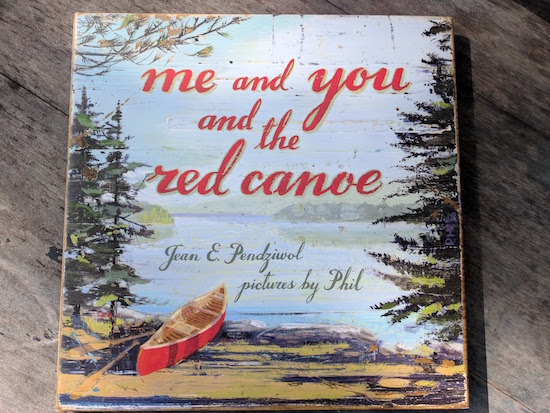
“We’re going to have to shut the windows,” I called out a few minutes ago. I’d gone outside to take photos for this blog post, and they’re possibly a bit blurry because I was shivering. There are only a few hours left of August, and tonight the temperature is supposed to go down to 7 degrees. Summer has ebbed, though there is still a long weekend left, and tomorrow we’re taking the ferry to the Toronto Islands and intend to play on the beach, even if it’s a little bit freezing and it might all be a bit English seaside. But we like the English seaside, and it seems a fitting way to spend the last day of summer holidays—beside the water, feet in the sand. We’ve had that kind of summer.
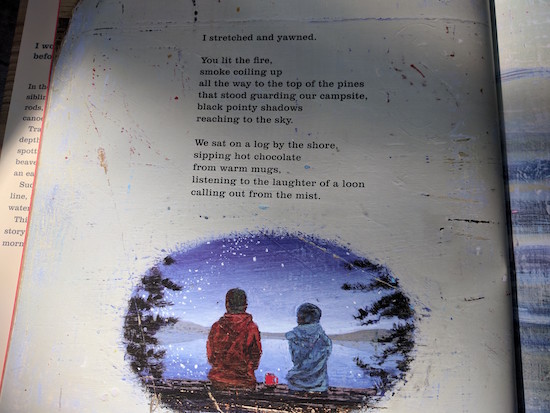
We are not big canoeists. Once in the Lake District, my husband and I rented a rowboat, and I ended up screaming at him as he steered us into a dock full of tourists, and it wasn’t very romantic. So we’ve been a bit wary of nautical vessels ever since then, unless they’re inflatable flamingos, which we’re all over. Literally. But still, Me and You and the Red Canoe, by Jean E. Pendziwol and illustrated by Phil, has been a book that (lucky us!) so suits our summer. We’ve had loons and campfires, and empty beaches, and quiet mornings, and twinkling stars and soaring eagles in the sky. Would be that our children could paddle away from us early morning, and return with fish that somebody in our family would know how to prepare. Imagine if anyone knew how to use a paddle…but still. We went kayaking when we were away in July, and it was pretty lovely. Nobody yelled at anyone.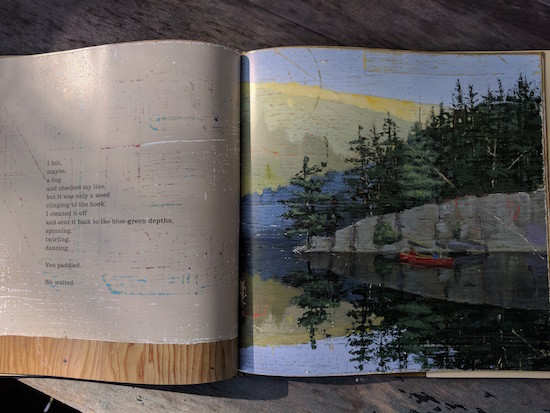
The illustrations in this book are beautiful, seemingly painted on wood, with lots of texture, a lovely roughness, and glimpses of under layers. They’re timeless, nostalgic in an interesting way, and a lovely complement to Pendziwol’s lyrical story, which is so rich in sensory detail and focused in the perfect notes. There’s not a lot of specificity—who are the siblings telling the story? When does it take place? Was this long ago or yesterday? When the siblings woke early and went out early to catch the fish that would be remembered as the best breakfast ever. Observing lots of wildlife, flora and fauna, and quiet and beauty on the way—it’s all the best things about summer, for those of us who are lucky enough to be able to get away from it all. Even if we don’t know how to canoe.
(PS We did visit the Canadian Canoe Museum last week, however! That’s the next best thing to actually paddling a canoe, right?)
August 30, 2017
Mitzi Bytes: Coming Up
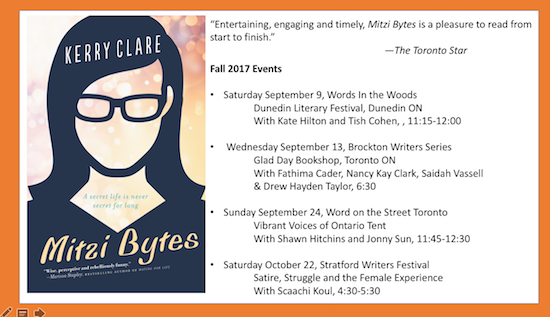
I am looking forward to a busy fall with Mitzi Bytes things, with two events in Toronto (including Word on the Street!) and trips to Dunedin and Stratford. At Brockton Writers on September 13, I’ll be giving a short talk about my experience of how I got from blog to book. And I’ve got book club visits scheduled too—very excited about these. Do let me know if you’d like me to visit your book club—email me at kerryclare AT gmail DOT com.
In other Mitzi Bytes news, my interview with Shelagh Rogers was rebroadcast last week (during the eclipse, even!) and that was fun. I was super happy that my #MitziInTheSun summer prize pack found an excellent home. Thanks to everybody who participated. And I’m grateful for this wonderful review by Heidi Darroch; one paragraph begins, “Like Maria Semple or Meg Wolitzer…” so I pretty much have everything I ever wanted.
August 27, 2017
All Time Record

I made a very uncharacteristic vow a few months ago to only bring a couple of books on vacation, and not be so maniacally compelled to be always reading. Because I remember feeling pressure to read on previous vacations, which is stupid for a vacation and also made me anti-social…and then I ended up bringing seven books on vacation, plus a few extras, for Stuart to read and for just-in-case scenarios. But I decided I didn’t have to finish them all during our week at the lake. What better way to retain that holiday feeling than to let the holiday reading continue over into the week we’re back home, I thought. There was no pressure. I was going away with a towering stack, but I didn’t have to read all of them.
But then I did! Without being anti-social, even, because I also swam in the lake, played UNO and charades and Old Maid and Zingo. But on top of this, I lingered in bed in the mornings, read by flashlight at night after everyone was asleep, and got lots of reading in while the children were out chasing frogs, treasure hunting, or partaking in nighttime movies every evening at 7pm in the rec hall. There was time enough for all the reading, but also for all the other things. The days were so perfectly elastic, the way summer days are meant to be.
 There was no rhyme nor reason to my stack of holiday books, except for the first, which was The Burning Girl, by Claire Messud, because I had to get it read for work reasons. But it turned out to be perfect, because it was such a summer book, steeped in atmosphere and there was a quarry and everything. Such a strange, skewed book too though, like everything Messud writes. It’s a look back on a friendship between two girls which breaks off at the point in which girlhood breaks off into womanhood, and the whole story delivered with this spectacular dose of nostalgia—except the main events of the narrative are just two years before and the narrator is still a teenager. I wasn’t expecting that, and it was kind of disorienting, this idea of the 1990s being something that happened “before I was born.” I’m used to young protagonists being set in the past. It was interesting. And she was such an interesting protagonist too, elusive and tricky in the way of Messud’s from The Women Upstairs. (Remember the furor from that book, about women and likability, and then Jennifer Weiner got involved?) This book is more subtle though, so much so that it needs an additional read to puzzle out its construction. The “Bev Burnes” character continues to haunt me, with her ample backside. And yes, the quarry. It would turn out that nearly all my holiday books would take place around bodies of water. Isn’t it funny the way that a syllabus assumes itself?
There was no rhyme nor reason to my stack of holiday books, except for the first, which was The Burning Girl, by Claire Messud, because I had to get it read for work reasons. But it turned out to be perfect, because it was such a summer book, steeped in atmosphere and there was a quarry and everything. Such a strange, skewed book too though, like everything Messud writes. It’s a look back on a friendship between two girls which breaks off at the point in which girlhood breaks off into womanhood, and the whole story delivered with this spectacular dose of nostalgia—except the main events of the narrative are just two years before and the narrator is still a teenager. I wasn’t expecting that, and it was kind of disorienting, this idea of the 1990s being something that happened “before I was born.” I’m used to young protagonists being set in the past. It was interesting. And she was such an interesting protagonist too, elusive and tricky in the way of Messud’s from The Women Upstairs. (Remember the furor from that book, about women and likability, and then Jennifer Weiner got involved?) This book is more subtle though, so much so that it needs an additional read to puzzle out its construction. The “Bev Burnes” character continues to haunt me, with her ample backside. And yes, the quarry. It would turn out that nearly all my holiday books would take place around bodies of water. Isn’t it funny the way that a syllabus assumes itself?
 From this point on my reading also became a fun celebration of all the bookshops I’ve been visiting this spring and summer. I picked up Turning, by Jessica J. Lee at Curiosity House Books when we were in Creemore in June, a book I was partial to for #SwimLit reasons and also because of Lindsay’s review at her swimming hole blog. Once again, a book focussed on a body of water, or in this case many of them—although this time I’d seen it coming. The memoir is Lee’s story of her lifelong complicated relationship with swimming and water, and also with notions of identity and home, and about how she got over a bout of heartache and depression by spending a year swimming in lakes near her home in Berlin. A year indeed, which means Lee swims in all kinds of weather, in the deepest winter with a hammer to break the ice, and in the winter she never swims for too long. Although apparently the more you winter swim, your body grows accustomed to lower temperatures—though I’m going to just take her word for it. (I must say that Lee inspired me to jump into the lake wholeheartedly every day and not be a slow entering ninny. If she can swim in December, I can just in during August.) I liked the book a lot, and found it strange and disorienting in a fascinating way, the way a foreign city first appears, kind of. It was unusual to be reading about Germany and Berlin because all my frames of reference for swimming are so Canadian and English—it occurs to me that I know nothing about German geography at all, and little more about its literature. There is so much still to be immersed it, but Lee’s memoir was a memorable dip.
From this point on my reading also became a fun celebration of all the bookshops I’ve been visiting this spring and summer. I picked up Turning, by Jessica J. Lee at Curiosity House Books when we were in Creemore in June, a book I was partial to for #SwimLit reasons and also because of Lindsay’s review at her swimming hole blog. Once again, a book focussed on a body of water, or in this case many of them—although this time I’d seen it coming. The memoir is Lee’s story of her lifelong complicated relationship with swimming and water, and also with notions of identity and home, and about how she got over a bout of heartache and depression by spending a year swimming in lakes near her home in Berlin. A year indeed, which means Lee swims in all kinds of weather, in the deepest winter with a hammer to break the ice, and in the winter she never swims for too long. Although apparently the more you winter swim, your body grows accustomed to lower temperatures—though I’m going to just take her word for it. (I must say that Lee inspired me to jump into the lake wholeheartedly every day and not be a slow entering ninny. If she can swim in December, I can just in during August.) I liked the book a lot, and found it strange and disorienting in a fascinating way, the way a foreign city first appears, kind of. It was unusual to be reading about Germany and Berlin because all my frames of reference for swimming are so Canadian and English—it occurs to me that I know nothing about German geography at all, and little more about its literature. There is so much still to be immersed it, but Lee’s memoir was a memorable dip.
 Next I read Do Not Become Alarmed, by Maile Maloy (also from Curiosity House Books in Creemore), whom I’d never read before, but I purchased the novel after reading Ann Patchett’s endorsement. In her back-of-the-book blurb, Patchett writes that this is the kind of novel you will barrel through and then should go back and re-read to realize how technically brilliant it is. Not quite sure I’ll be doing the latter, but this is a 300+page book that I read in less than a day. Also about a body of water, this one being an alligator-infested river in Panama in which a group of American children are floating in inner-tubes when they drift away from their errant parents. The American children are on a cruise with their families and they’ve just embarked from an excursion, and it’s all gone a bit wrong, and it’s only going to get worse. The story is indeed fast-paced and enthralling, and there were a few moments where the prose and what was happening took my breath away. This is a book about privilege, naivety, stupidity, and the ways in which Americans (and their ilk—hi! [waves]) are able to go about their lives protected from the risks and dangers that are commonplace in so many other countries.
Next I read Do Not Become Alarmed, by Maile Maloy (also from Curiosity House Books in Creemore), whom I’d never read before, but I purchased the novel after reading Ann Patchett’s endorsement. In her back-of-the-book blurb, Patchett writes that this is the kind of novel you will barrel through and then should go back and re-read to realize how technically brilliant it is. Not quite sure I’ll be doing the latter, but this is a 300+page book that I read in less than a day. Also about a body of water, this one being an alligator-infested river in Panama in which a group of American children are floating in inner-tubes when they drift away from their errant parents. The American children are on a cruise with their families and they’ve just embarked from an excursion, and it’s all gone a bit wrong, and it’s only going to get worse. The story is indeed fast-paced and enthralling, and there were a few moments where the prose and what was happening took my breath away. This is a book about privilege, naivety, stupidity, and the ways in which Americans (and their ilk—hi! [waves]) are able to go about their lives protected from the risks and dangers that are commonplace in so many other countries.
 Next up was Weaving Water, by Annamarie Beckel, which was a book I’d been interested in for Annie Dillard Tinker Creek reasons, and then picked up to read after I met Annamarie at the Lakefield Literary Festival. In this book, the body of water in question is a pond in Newfoundland—and the novel points out that “ponds” in Newfoundland can often be the size of large lakes. On the banks of the pond is an old cabin that belonged to Beth Meyer’s husband’s great-aunt, who left it to them after she died. An ecologist by training and on the cusp of a new stage in life now that her daughter has gone away to school, Beth moves out to the remote cabin to do research on river otters, looking for answers to save an earth in peril. She meets her eccentric neighbour with an unshakable belief in ghosts and magic, and her neighbour’s nephew who Beth is drawn to in spite of herself. It turns out the answers Beth is looking for are not just about river otters after all, but the creatures remain at the centre of the novel and Beckel’s wonder at their habits and mysteries are absolutely palpable.
Next up was Weaving Water, by Annamarie Beckel, which was a book I’d been interested in for Annie Dillard Tinker Creek reasons, and then picked up to read after I met Annamarie at the Lakefield Literary Festival. In this book, the body of water in question is a pond in Newfoundland—and the novel points out that “ponds” in Newfoundland can often be the size of large lakes. On the banks of the pond is an old cabin that belonged to Beth Meyer’s husband’s great-aunt, who left it to them after she died. An ecologist by training and on the cusp of a new stage in life now that her daughter has gone away to school, Beth moves out to the remote cabin to do research on river otters, looking for answers to save an earth in peril. She meets her eccentric neighbour with an unshakable belief in ghosts and magic, and her neighbour’s nephew who Beth is drawn to in spite of herself. It turns out the answers Beth is looking for are not just about river otters after all, but the creatures remain at the centre of the novel and Beckel’s wonder at their habits and mysteries are absolutely palpable.
 It took me a while to know that Emily Fridlund’s A History of Wolves (which I bought at Lighthouse Books in Brighton the weekend we were camping) would really work. There’s something off-putting about it, and it takes time to realize that that off-puttingness is part of its very design. Ostensibly, it fits right in with all the other books, with the body of water even—the lake the narrator lives on with her parents at their abandoned commune, isolated in the woods of northern Minnesota. But then a couple moves into a new cabin across the lake, and she can watches them through their windows, and begins to care for their young son. And she’s drawn to the family in a way that’s connected with a former teacher who was eventually charged with possession of child p*rnography, and a classmate who’d been connected to him. How do all the pieces fit together? To be honest, I’m still not entirely sure and it’s the kind of book I should return to and I’m even compelled to, but am not sure I will. Because of the off-puttingness, a narrator who never really connects to anyone. Again, which is the point, and there’s a killer last line that underlines this point. I ended up really appreciating this book, though I can’t say I liked it. But in the end, it was a perfect fit with all the rest, the splash of the paddle from Linda’s canoe as she makes her way across the lake.
It took me a while to know that Emily Fridlund’s A History of Wolves (which I bought at Lighthouse Books in Brighton the weekend we were camping) would really work. There’s something off-putting about it, and it takes time to realize that that off-puttingness is part of its very design. Ostensibly, it fits right in with all the other books, with the body of water even—the lake the narrator lives on with her parents at their abandoned commune, isolated in the woods of northern Minnesota. But then a couple moves into a new cabin across the lake, and she can watches them through their windows, and begins to care for their young son. And she’s drawn to the family in a way that’s connected with a former teacher who was eventually charged with possession of child p*rnography, and a classmate who’d been connected to him. How do all the pieces fit together? To be honest, I’m still not entirely sure and it’s the kind of book I should return to and I’m even compelled to, but am not sure I will. Because of the off-puttingness, a narrator who never really connects to anyone. Again, which is the point, and there’s a killer last line that underlines this point. I ended up really appreciating this book, though I can’t say I liked it. But in the end, it was a perfect fit with all the rest, the splash of the paddle from Linda’s canoe as she makes her way across the lake.
 I wasn’t sure how Scarborough, by Catherine Hernandez (which I bought on our trip to Mabel’s Fables a few weeks back), would fit in with all the rest, a book that is so urban. But then it turned out to have its own body of water, the Rouge River, and the book opens with a heron at the river’s mouth, and it moves through the seasons in the same way Lee’s Turning did. I loved this novel, which had been recommended by loads of people and which I read in less than a day. At the centre of the story is a drop-in centre at a Scarborough elementary school where families turn up for company, support…and breakfast. We see the program coordinator’s communications with her supervisor and the way that bureaucratic requirements (and racism) keep the program from properly serving the people it’s meant to. There are failings and there is tragedy, but there is also resilience and connection. Scarborough has just been nominated for a Toronto Book Award and I’m thrilled about that.
I wasn’t sure how Scarborough, by Catherine Hernandez (which I bought on our trip to Mabel’s Fables a few weeks back), would fit in with all the rest, a book that is so urban. But then it turned out to have its own body of water, the Rouge River, and the book opens with a heron at the river’s mouth, and it moves through the seasons in the same way Lee’s Turning did. I loved this novel, which had been recommended by loads of people and which I read in less than a day. At the centre of the story is a drop-in centre at a Scarborough elementary school where families turn up for company, support…and breakfast. We see the program coordinator’s communications with her supervisor and the way that bureaucratic requirements (and racism) keep the program from properly serving the people it’s meant to. There are failings and there is tragedy, but there is also resilience and connection. Scarborough has just been nominated for a Toronto Book Award and I’m thrilled about that.
 Next up was Lianne Moriarty’s Truly Madly Guilty, which I bought at Beggar’s Banquet Books in Gananoque when I was there in early May. I loved her Big Little Lies back in March, and remember hearing about this one when it came out last year but then didn’t read it after coming across a dismissive review—I think there was a big reveal that was meant to be anti-climatic in the end. But I’m so glad I finally picked it up. Moriarty is brilliant, and will never get the literary credit she deserves for sexist reasons. Indeed, this is a novel that revolves around a mystery—something happened at a bbq and the novel moves between the perspectives of different characters reflecting on the events leading up to it. At the centre of the book is two friends, Clementine and Erica, friends since childhood with a complicated dynamic. And Moriarty gets it so perfectly, the way that a friendship can come with ambivalence and animosity, and she ties it to the women’s marriages and their relationships to their mothers. The reviewer is correct that the big reveal is less than we’ve been lead to believe it’s going to be—but it doesn’t matter because the point of the book turns out to be so much bigger than what happened one night. And that’s what’s so fantastic about it, the hugeness of this novel’s scope—this event of one night ends up connecting to stories that are decades old and to characters far-flung and nearby. It reminded me of The Slap, by Christian Tsiolkas, but without the violence and misogyny. Moriarty manages to show every single character at their worst, but redeem them too in a way that’s entirely believable. And now I want to read every single thing she’s ever written. (PS: this was the one that didn’t quite click with all the others, but then there ended up being a body of water after all, which was a very tacky backyard fountain that meets with a sorry end.)
Next up was Lianne Moriarty’s Truly Madly Guilty, which I bought at Beggar’s Banquet Books in Gananoque when I was there in early May. I loved her Big Little Lies back in March, and remember hearing about this one when it came out last year but then didn’t read it after coming across a dismissive review—I think there was a big reveal that was meant to be anti-climatic in the end. But I’m so glad I finally picked it up. Moriarty is brilliant, and will never get the literary credit she deserves for sexist reasons. Indeed, this is a novel that revolves around a mystery—something happened at a bbq and the novel moves between the perspectives of different characters reflecting on the events leading up to it. At the centre of the book is two friends, Clementine and Erica, friends since childhood with a complicated dynamic. And Moriarty gets it so perfectly, the way that a friendship can come with ambivalence and animosity, and she ties it to the women’s marriages and their relationships to their mothers. The reviewer is correct that the big reveal is less than we’ve been lead to believe it’s going to be—but it doesn’t matter because the point of the book turns out to be so much bigger than what happened one night. And that’s what’s so fantastic about it, the hugeness of this novel’s scope—this event of one night ends up connecting to stories that are decades old and to characters far-flung and nearby. It reminded me of The Slap, by Christian Tsiolkas, but without the violence and misogyny. Moriarty manages to show every single character at their worst, but redeem them too in a way that’s entirely believable. And now I want to read every single thing she’s ever written. (PS: this was the one that didn’t quite click with all the others, but then there ended up being a body of water after all, which was a very tacky backyard fountain that meets with a sorry end.)
 And next up to another woman writer who doesn’t get the credit for being as brilliant as she is, and that’s Laura Lippman—although she gets some credit. I’ve loved her work for years now, and was happy to read Wilde Lake, which I bought at Happenstance Books when I was there for the Lakefield Literary Festival. Stuart had already read it and couldn’t wait for me to finally get to it so we could talk about it. Loosely an homage to To Kill a Mockingbird, it’s about a newly elected State Attorney in Howard County, Maryland, who’s following in her revered father’s footsteps. When Lu’s first big murder case surprisingly hearkens back to events during the summer of 1980 during which her big-shot brother was involved in an altercation where somebody turned up dead, all kinds of long-forgotten secrets are brought up to the surface. This is a novel about rape culture, and the ways in which changes in the law have influenced how rapes are prosecuted, and it’s about fallibility, family secrets, and lost ideals, and I thought about it for days and days afterwards. It’s full of twists and surprises, and the most evocatively depicted small town, built around a lake, of course. It’s really an extraordinarily good novel.
And next up to another woman writer who doesn’t get the credit for being as brilliant as she is, and that’s Laura Lippman—although she gets some credit. I’ve loved her work for years now, and was happy to read Wilde Lake, which I bought at Happenstance Books when I was there for the Lakefield Literary Festival. Stuart had already read it and couldn’t wait for me to finally get to it so we could talk about it. Loosely an homage to To Kill a Mockingbird, it’s about a newly elected State Attorney in Howard County, Maryland, who’s following in her revered father’s footsteps. When Lu’s first big murder case surprisingly hearkens back to events during the summer of 1980 during which her big-shot brother was involved in an altercation where somebody turned up dead, all kinds of long-forgotten secrets are brought up to the surface. This is a novel about rape culture, and the ways in which changes in the law have influenced how rapes are prosecuted, and it’s about fallibility, family secrets, and lost ideals, and I thought about it for days and days afterwards. It’s full of twists and surprises, and the most evocatively depicted small town, built around a lake, of course. It’s really an extraordinarily good novel.
 And then it was Friday and we were heading home the next day and the other book we’d bought was Bear Town, but Stuart was in the middle of it. And so I went to check out the library at the resort we were staying at, and was pleased to discover The Murder Stone, by Louise Penny (which was the UK title, published in Canada as A Rule Against Murder), which I haven’t read yet. (I came to Penny’s Three Pines series late with A Trick of the Light.) It was absolutely perfect to read because it was set at a place much like the place where were staying (albeit much much more fancy!) and as I was reading the part in the book where there was a huge storm with thunder and lightning, we were having the exact same weather and the lightning kept illuminating our little cabin just like daylight, and it was all a little too close to home.
And then it was Friday and we were heading home the next day and the other book we’d bought was Bear Town, but Stuart was in the middle of it. And so I went to check out the library at the resort we were staying at, and was pleased to discover The Murder Stone, by Louise Penny (which was the UK title, published in Canada as A Rule Against Murder), which I haven’t read yet. (I came to Penny’s Three Pines series late with A Trick of the Light.) It was absolutely perfect to read because it was set at a place much like the place where were staying (albeit much much more fancy!) and as I was reading the part in the book where there was a huge storm with thunder and lightning, we were having the exact same weather and the lightning kept illuminating our little cabin just like daylight, and it was all a little too close to home.





